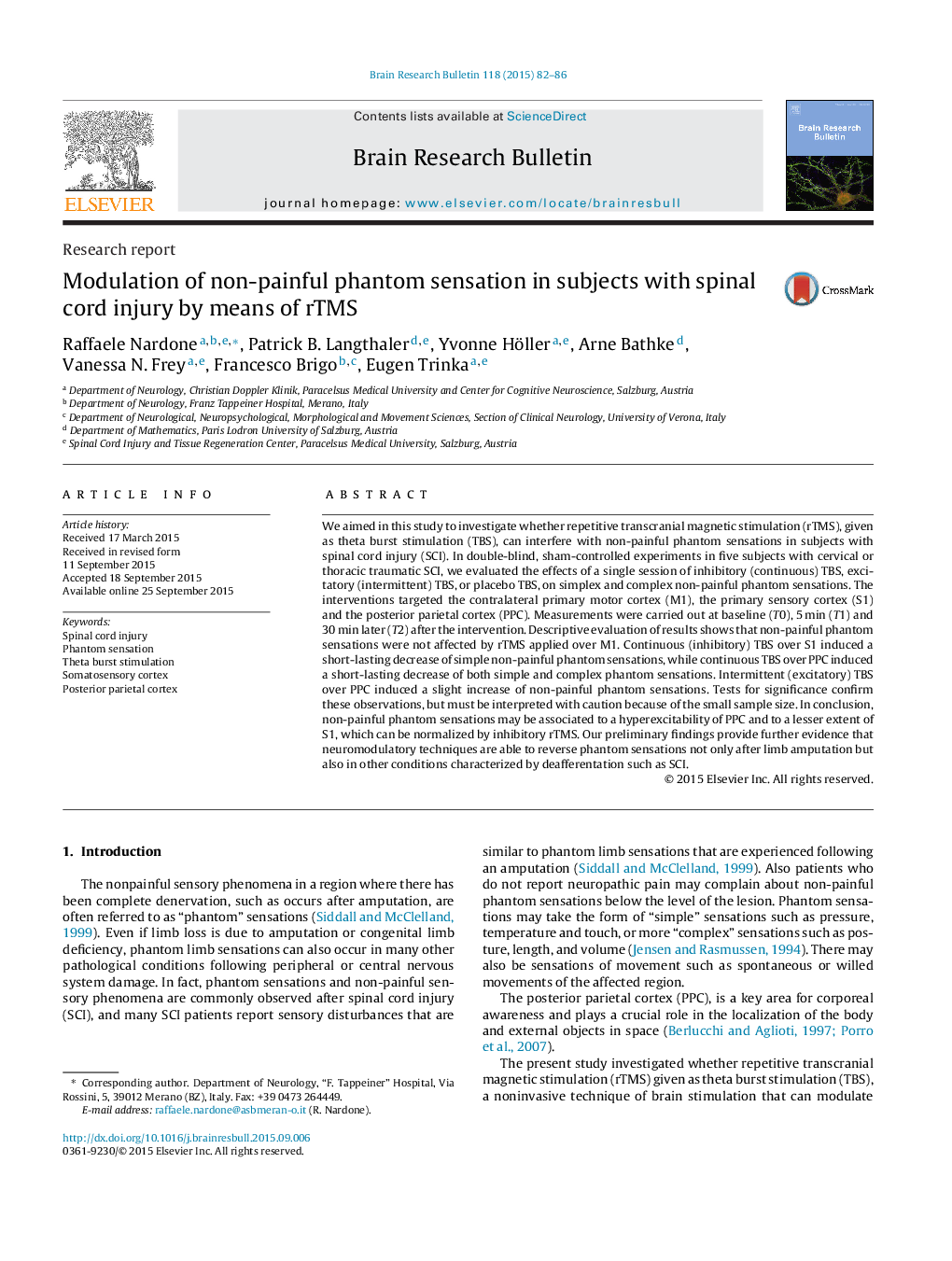| کد مقاله | کد نشریه | سال انتشار | مقاله انگلیسی | نسخه تمام متن |
|---|---|---|---|---|
| 6261714 | 1613237 | 2015 | 5 صفحه PDF | دانلود رایگان |

- Inhibitory TBS over S1 induces a decrease of simple phantom sensations.
- Inhibitory TBS over PPC induces a decrease of simple and complex phantom sensations.
- Non-painful phantom sensations are associated to hyperexcitability of PPCÂ >Â S1.
- Neuromodulatory techniques are able to reverse phantom sensations.
We aimed in this study to investigate whether repetitive transcranial magnetic stimulation (rTMS), given as theta burst stimulation (TBS), can interfere with non-painful phantom sensations in subjects with spinal cord injury (SCI). In double-blind, sham-controlled experiments in five subjects with cervical or thoracic traumatic SCI, we evaluated the effects of a single session of inhibitory (continuous) TBS, excitatory (intermittent) TBS, or placebo TBS, on simplex and complex non-painful phantom sensations. The interventions targeted the contralateral primary motor cortex (M1), the primary sensory cortex (S1) and the posterior parietal cortex (PPC). Measurements were carried out at baseline (T0), 5Â min (T1) and 30Â min later (T2) after the intervention. Descriptive evaluation of results shows that non-painful phantom sensations were not affected by rTMS applied over M1. Continuous (inhibitory) TBS over S1 induced a short-lasting decrease of simple non-painful phantom sensations, while continuous TBS over PPC induced a short-lasting decrease of both simple and complex phantom sensations. Intermittent (excitatory) TBS over PPC induced a slight increase of non-painful phantom sensations. Tests for significance confirm these observations, but must be interpreted with caution because of the small sample size. In conclusion, non-painful phantom sensations may be associated to a hyperexcitability of PPC and to a lesser extent of S1, which can be normalized by inhibitory rTMS. Our preliminary findings provide further evidence that neuromodulatory techniques are able to reverse phantom sensations not only after limb amputation but also in other conditions characterized by deafferentation such as SCI.
Journal: Brain Research Bulletin - Volume 118, September 2015, Pages 82-86